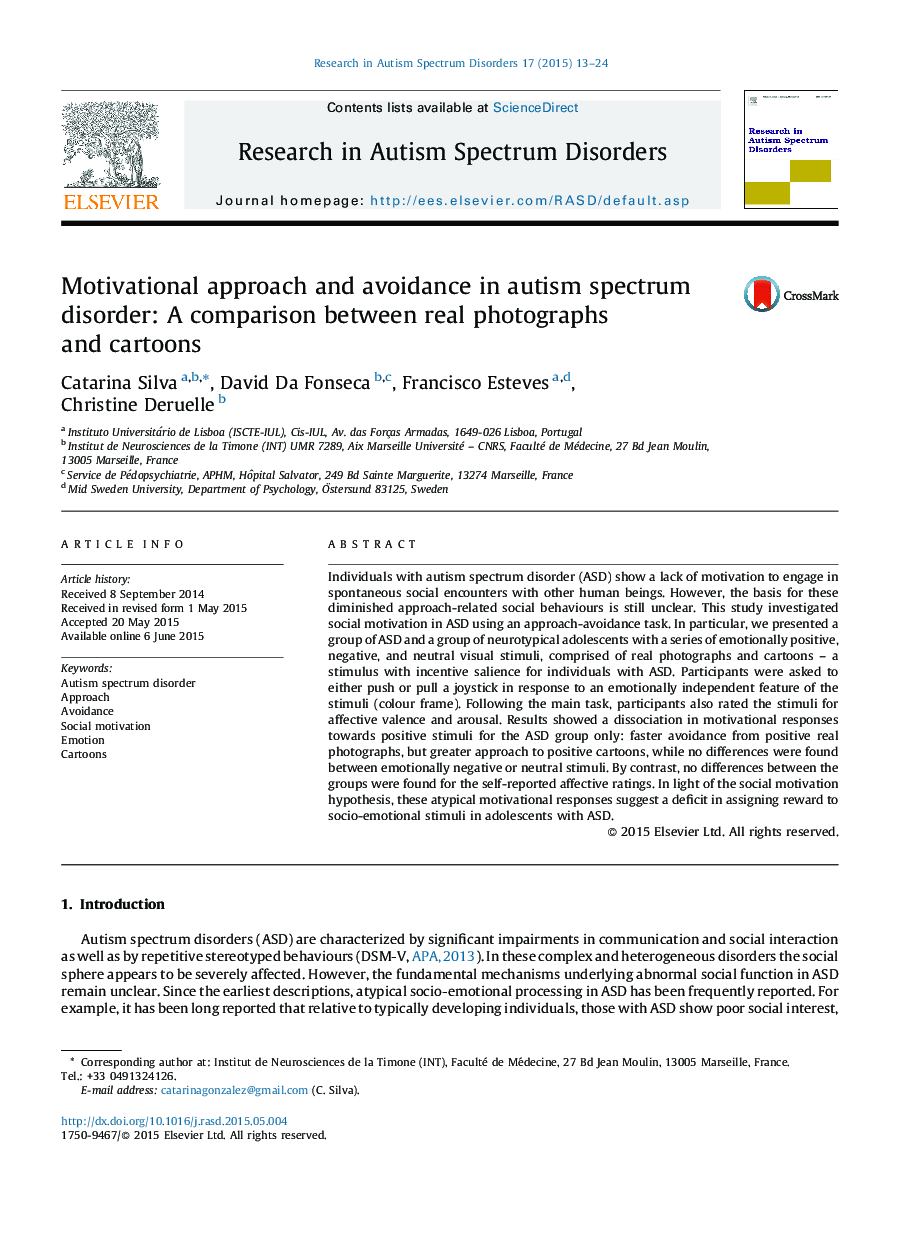| Article ID | Journal | Published Year | Pages | File Type |
|---|---|---|---|---|
| 370038 | Research in Autism Spectrum Disorders | 2015 | 12 Pages |
•Individuals with ASD show a lack of motivation to engage in the social world.•Approach and avoidance to socio-emotional real and cartoon stimuli were compared.•The ASD group showed greater motivational avoidance to positive real photographs.•The ASD group showed greater motivational approach towards positive cartoons.•Results suggest a deficit in assigning reward to socio-emotional stimuli.
Individuals with autism spectrum disorder (ASD) show a lack of motivation to engage in spontaneous social encounters with other human beings. However, the basis for these diminished approach-related social behaviours is still unclear. This study investigated social motivation in ASD using an approach-avoidance task. In particular, we presented a group of ASD and a group of neurotypical adolescents with a series of emotionally positive, negative, and neutral visual stimuli, comprised of real photographs and cartoons – a stimulus with incentive salience for individuals with ASD. Participants were asked to either push or pull a joystick in response to an emotionally independent feature of the stimuli (colour frame). Following the main task, participants also rated the stimuli for affective valence and arousal. Results showed a dissociation in motivational responses towards positive stimuli for the ASD group only: faster avoidance from positive real photographs, but greater approach to positive cartoons, while no differences were found between emotionally negative or neutral stimuli. By contrast, no differences between the groups were found for the self-reported affective ratings. In light of the social motivation hypothesis, these atypical motivational responses suggest a deficit in assigning reward to socio-emotional stimuli in adolescents with ASD.
